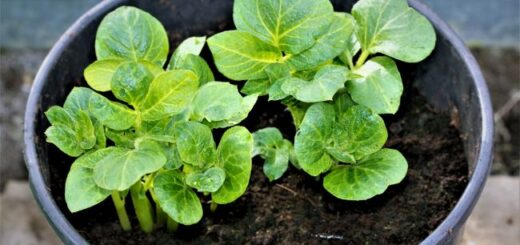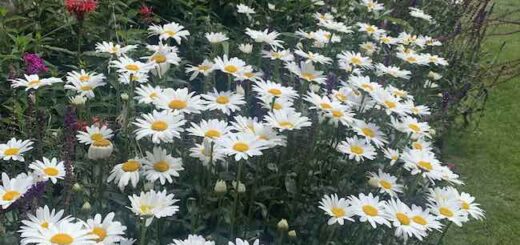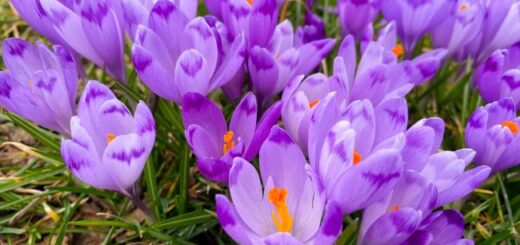GardenAdvice.co.uk Easter Gardening Calendar Special ( Audio Available )

Beefsteak tomatoes, also known as beef tomatoes
Click here to download the audio file ( .wav ) or Click Here to listen as a podcast
Spring is well underway, and Easter is the perfect time to take stock of your garden and get ahead with a few essential tasks. Here’s your Easter Gardening Calendar packed with seasonal jobs, tips, and some GardenAdvice member perks you might have forgotten about!
1. Wild Garlic: Beautiful in the Kitchen, a Bulbous Beast in the Garden
Wild garlic has become more rampant with climate change shifting weed dynamics. While it’s delicious in cooking and looks lovely in a wild patch, it can quickly become a thug in borders and lawns.
- If you want to grow it, use pots or a controlled bed.
- In gardens, it spreads rapidly underground and dies back early, leaving no visible trace but plenty of energy stored in bulbs to spread next season.
- Best control method Dig it out early or smother with landscape membrane and mulch before it takes over.
2. Prune Spring Flowering Shrubs
As spring-flowering shrubs begin to fade, it’s time to prune. This helps stimulate new growth for next year’s flowers.
- Shrubs to focus on: Forsythia, Philadelphus, Choisya, and even perennials like Bergenia.
- Prune just after flowering to give the plant the rest of the season to recover and grow strong for next spring.
- Examples include
Chaenomeles (Flowering Quince)
- Latin Name: Chaenomeles speciosa or Chaenomeles japonica
- Pruning: Prune immediately after flowering. Cut back flowered shoots to a strong bud and thin out older, woody stems to promote fresh growth. Can be trained against walls or grown as a freestanding shrub.
- Care: Tolerates a range of soils but prefers sun to part shade. Feed with a general-purpose fertiliser after pruning to boost next year’s flower display.
Choisya (Mexican Orange Blossom)
- Pruning: Prune lightly after flowering, especially if it’s a spring-flowering variety like Choisya ternata. Remove one or two older stems at the base to encourage fresh growth.
- Care: Thrives in full sun and well-drained soil. Feed after pruning with a balanced fertiliser.
Forsythia
- Pruning: Prune immediately after flowering in spring. Cut back flowered stems to strong shoots lower down and remove up to a third of the oldest stems at ground level each year to rejuvenate.
- Care: Very low maintenance. Add a balanced fertiliser in spring and water during prolonged dry spells.
Ribes (Flowering Currant)
- Pruning: Best pruned right after flowering. Remove some of the older stems at the base and cut flowered stems back to a strong pair of buds.
- Care: Can get woody if left unpruned. A feed of Grow More or similar in early summer will keep it vigorous.
Sweetwood (Sarcococca)
- Pruning: Minimal pruning needed. Lightly trim after flowering if shaping is required. Remove any dead or wayward branches.
- Care: Happy in shade and moist soil. Apply mulch and feed in spring to encourage healthy growth and strong fragrance.
3. Time to Feed!
Boost your plants now to make the most of the growing season:
- Start using liquid tomato food every three weeks to encourage flowering and fruiting.
- Did you feed earlier in the year with Growmore or another base fertiliser? Perfect! Now liquid feeding will keep things flourishing.
4. Free Lawn Care for GardenAdvice Members
If you’re a GardenAdvice MyGardenTeam member or have taken one of our courses, you’re entitled to a free lawn care treatment (up to 75 square meters).
- Now’s a great time to book your free treatment. We’ll arrange a visit to feed and treat your lawn, getting it lush and green for summer.
5. Support for Peonies and Tall growing perennials
Peonies are shooting up, and many perennials are following suit.
- Stop plants flopping early after heavy rain by installing supports now.
- Metal supports have skyrocketed in price, so we suggest using hazel sticks for a more natural and cost-effective method.
- No hazel handy? Contact your MyGardenTeam expert – we can supply some from our copied stock.
6. Bluebell Boost
Bluebells are in full swing. To ensure a stunning display again next year:
- Feed now with a liquid tomato feed as flowering finishes.
- Allow leaves to die back naturally – bulbs are forming next year’s flowers inside right now.
7. Tomatoes, Peppers & Chillies – Full Steam Ahead
Get those warm-season crops going!
- Tomatoes: Best grown in terracotta pots (with the bottom removed) filled with John Innes No.1 & 2 compost and placed directly onto soil or a grow bag in your greenhouse.
- Humidity = flavour. This technique creates ideal humidity and super-rich flavour.
- Peppers & Chillies: Grow in similar conditions. Start now as they need a long season — and may even need to come indoors in autumn.
Pro Tip: Look out for early-started plants at garden centres and B&Q. Many were sown post-Christmas and are useful because they will fruit early.
Bonus Tip: Try Italian heritage tomatoes! Less cross-bred than UK F1 varieties, they offer outstanding flavour and natural disease resistance. Well worth the effort!





